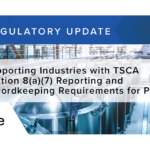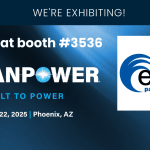
NEPA Compliance, or compliance with the National Environmental Policy Act, is an essential requirement for any project in San Antonio, TX. Understanding and adhering to NEPA regulations is crucial not only for the success of the project but also for protecting the environment and ensuring sustainable development in the city.
Understanding NEPA Compliance
The Basics of NEPA Compliance
NEPA is a federal law enacted in 1970 that aims to promote the understanding and protection of the environment. It requires federal agencies to consider the environmental effects of their proposed actions and involve the public and other interested parties in the decision-making process.
NEPA compliance involves a thorough assessment of the potential environmental impacts of a project, as well as an evaluation of alternatives. This process allows decision-makers to make informed choices that minimize adverse effects on the environment while meeting project objectives.
Importance of NEPA Compliance
Complying with NEPA is not just a legal requirement; it also ensures responsible and sustainable development in San Antonio. By considering the environmental impacts of projects, NEPA helps to protect natural resources, preserve biodiversity, and prevent pollution.
NEPA compliance also fosters transparency and public participation, as it requires agencies to involve the public and gather input during the decision-making process. This helps to ensure that community concerns and values are taken into account, leading to better project outcomes and increased public trust.
NEPA Compliance Process
Steps in the NEPA Compliance Process
The NEPA compliance process consists of several key steps that must be followed by federal agencies when proposing actions with potential environmental impacts:
- Notification and Scoping: The agency identifies the proposed action and invites public and stakeholder input to determine the scope of the environmental analysis.
- Environmental Assessment (EA) or Environmental Impact Statement (EIS): The agency prepares either an EA or an EIS to evaluate the potential environmental effects of the proposed action and any alternative options.
- Review and Comment: The draft EA or EIS is made available for public review and comment, allowing interested parties to provide feedback and raise concerns.
- Final EA or EIS: Taking into account public input and further analysis, the agency prepares a final EA or EIS, addressing comments received and outlining the chosen course of action.
- Decision: The agency makes a final decision based on the analysis and recommendations presented in the final EA or EIS.
- Monitoring and Mitigation: If approved, the agency implements the project and monitors its environmental impacts, taking measures to minimize harm and mitigate any adverse effects.
Key Players in the NEPA Compliance Process
The NEPA compliance process involves various stakeholders who play important roles in ensuring a thorough and transparent assessment of environmental impacts:
- Federal Agencies: The agency proposing the action is responsible for conducting the NEPA compliance process and ensuring that all applicable laws and regulations are followed.
- Consulting Firms: Often, agencies rely on environmental consulting firms to help assess the potential environmental impacts of the proposed action and develop the necessary documentation.
- Public and Stakeholders: The NEPA process emphasizes public involvement, allowing individuals, organizations, and communities to have a voice in the decision-making process through public hearings, comment periods, and other mechanisms.
- Regulatory Agencies: Other state and federal agencies with jurisdiction over specific aspects of the proposed action may also be involved in the NEPA compliance process, providing expert input and ensuring compliance with their respective regulations.
NEPA Compliance in San Antonio: A Closer Look
Local Regulations and Guidelines
In addition to federal NEPA regulations, projects in San Antonio must comply with local regulations and guidelines. The city has specific requirements regarding land use, zoning, natural resource protection, and other aspects that complement NEPA compliance.
Understanding the local regulations and guidelines is crucial to avoid delays and ensure smooth project implementation. Local agencies, such as the San Antonio River Authority and the San Antonio Metropolitan Health District, play a vital role in enforcing these regulations and providing guidance to project proponents.
Challenges in NEPA Compliance in San Antonio
NEPA compliance in San Antonio may present some unique challenges. The city’s rapid growth and development place increasing pressure on the environment and require careful and responsible planning.
One challenge is the preservation of natural resources, such as the San Antonio River, which is a vital ecological and recreational asset. Balancing the need for development with the preservation of these resources requires careful consideration, stakeholder engagement, and innovative design solutions.
The urban nature of San Antonio also poses challenges related to transportation and air quality. Ensuring that new projects contribute to sustainable mobility options and adhere to air quality standards is essential for maintaining a healthy and livable city.
Overcoming Compliance Challenges
Best Practices for NEPA Compliance
To overcome NEPA compliance challenges, project proponents in San Antonio can follow these best practices:
- Early Engagement: Engage stakeholders and the public early in the process to identify concerns and explore potential alternatives.
- Collaboration: Foster collaboration among all relevant parties, including regulatory agencies, local communities, and environmental organizations, to find common ground and develop solutions that consider diverse perspectives.
- Streamline Processes: Implement efficient and streamlined processes to reduce delays and ensure timely compliance with NEPA requirements.
- Use Technology: Leverage technology and data analytics to assess environmental impacts more accurately and identify potential mitigation measures.
Resources for NEPA Compliance in San Antonio
San Antonio offers various resources to help navigate the NEPA compliance process:
- City websites: Visit the official websites of the City of San Antonio, the San Antonio River Authority, and other local agencies involved in environmental planning for information and guidance on compliance requirements and processes.
- Local Environmental Consultants: Engage the services of local environmental consulting firms familiar with San Antonio’s regulations and processes to ensure smooth compliance.
- Industry Associations: Join industry associations and networks that focus on sustainability and environmental planning in San Antonio to access valuable resources, best practices, and networking opportunities.
The Future of NEPA Compliance in San Antonio
Predicted Changes in Compliance Regulations
The field of environmental regulation is constantly evolving, and future changes in NEPA compliance regulations are expected to further enhance environmental protection and sustainability in San Antonio. Some potential changes may include:
- Increased Emphasis on Climate Change: Future regulations may require a more comprehensive analysis of the potential impacts of climate change on projects and encourage the adoption of resilient and low-carbon solutions.
- Enhanced Public Participation: Efforts may be made to improve public participation in the NEPA compliance process, utilizing technological advancements and innovative engagement strategies.
- Streamlined Processes: Continued efforts to streamline and speed up the NEPA compliance process to facilitate responsible development while ensuring thorough environmental assessments.
Preparing for Future Compliance Requirements
To prepare for future compliance requirements, project proponents in San Antonio should:
- Stay Informed: Stay updated on changes in NEPA regulations and local environmental guidelines to proactively address any new compliance requirements.
- Invest in Sustainability: Embrace sustainable practices and design solutions from the early stages of project planning to align with future compliance expectations.
- Engage with Experts: Collaborate with environmental consultants and industry experts to anticipate and address future compliance challenges effectively.
NEPA compliance is crucial for sustainable development in San Antonio. By understanding the NEPA compliance process, overcoming challenges, and preparing for future requirements, project proponents can contribute to a thriving city that values the environment and community well-being.
As you navigate the complexities of NEPA compliance in San Antonio, TX, remember that you don’t have to do it alone. ESE Partners is dedicated to responsibly moving your business forward with our expert environmental problem-solving services. Whether you’re dealing with stormwater permitting, SPCC planning, wastewater reporting, or seeking sustainable solutions for water sourcing, our team is equipped to manage every facet of your water compliance needs. With significant changes on the horizon for the USACE review process in the Galveston County District, now is the time to secure a knowledgeable partner who can expedite your project. Take the first step towards ensuring your project’s success and environmental integrity by reaching out to us. Request A Proposal today and let ESE Partners provide the support you need for your environmental compliance and due diligence requirements.








